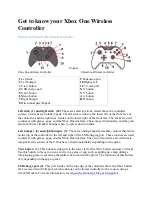
Connection
6.3 Connecting the push-in terminals
SIRIUS 3RM1 motor starter
90
Manual, 11/2013, A5E0345285095020A/RS-AB/002
6.3
Connecting the push-in terminals
6.3.1
Wiring rules for spring-loaded terminals (with push-in technology)
Wiring rules for ...
Control current terminals (top of
enclosure):
Main current terminals
(bottom of enclosure)
Connectable cross-sections for solid cables
2 x 0.5 ... 2 x 1.5 mm²
0.5 ... 4 mm²
(AWG
1)
: 20 ... 16)
AWG
1)
: 20 ... 12
Connectable cross-sections for
flexible cables
Without end sleeve
2 x 0.5 ... 2 x 1.5 mm²
0.5 ... 4 mm²
(AWG
1)
: 20 ... 16)
AWG
1)
: 20 ... 12
With end sleeve (with and
without plastic sleeve)
2 x 0.5 ... 2 x 1.0 mm²
2)
0.5 ... 2.5 mm²
(AWG
1)
: 20 ... 18)
(AWG
1)
: 20 ... 14)
With TWIN end sleeve
---
2 x 0.5 ... 2x1.5 mm²
---
(AWG
1)
: 20 ... 16)
Cable stripping length
10 ... 11 mm
End sleeves according to DIN 46228-4 with plastic sleeve
10 mm
1)
AWG: American Wire Gauge (AWG does not define use of end sleeves)
2)
When 2 x 1.0 mm² end sleeves with a plastic sleeve are used, space problems may arise with the sleeves; as an
alternative, you are advised to use end sleeves without plastic sleeves
Notes on handling spring-loaded terminals with push-in technology
The terminal area of the spring-loaded terminals is rectangular, and the maximum overall
dimensions of a conductor to be wired must not exceed 1.5 x 2.4 mm (control current
terminals) or 2.4 x 2.8 mm (main current terminals).
Attention must be paid to the orientation of the terminal area, which may call for vertical
fitting of rectangularly crimped cables.
To make optimum use of available terminal area, you are advised to choose a form of
crimping that creates a corresponding rectangular contour. Trapezoidal crimping is generally
very highly suitable in this case.
When use is made of a cable that utilizes the full overall height, the terminal's spring is
deflected to the maximum. Therefore, removal of this cable may become a problem because
it requires further deflection of the spring.
















































